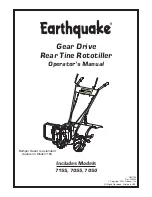
Flooded type water cooled screw chiller (PCB Control)
3
2.
Maintenance safety considerations
2.1 Engineers safety consideration
(1)
Engineers working on the electric or refrigeration components must be authorized, trained and fully
qualified to do so. All refrigerant circuit repairs must be carried out by a trained person fully qualified
to work on these units. He must have been trained and be familiar with the equipment and the
installation. All welding operations must be carried out by qualified specialists.
(2)
The insulation must be removed and heat generation must be limited by using a wet cloth. Any
manipulation (opening or closing) of a shut-off valve must be carried out by a qualified and
authorized engineer. These procedures must be carried out with the unit shut-down.
NOTE:
During any handling, maintenance and service operations the engineers working on the unit
must be equipped with safety gloves, glasses, shoes and protective clothing.
(1)
Never work on a unit that is still energized.
(2)
Never work on any of the electrical components, until the general power supply to the unit has been
cut using the disconnect switch in the control box.
(3)
If any maintenance operations are carried out on the unit, lock the power supply circuit ahead of the
machine.
(4)
If the work is interrupted, always ensure that all circuits are still deenergized before resuming the
work.
ATTENTION:
Even if the unit has been switched off, the power circuit remains energized, unless the unit
or circuit disconnect switch is open. Refer to the wiring diagram for further details. Attach appropriate
safety labels.
2.2 Operating checks:
Important information regarding the refrigerant used:
Refrigerant type: R134a
Periodic inspections for refrigerant leaks may be required depending on local legislation. Please
contact your local dealer for more information.
During the life-time of the system, inspection and tests must be carried out in accordance with
national regulations.
2.3 Safety device checks:
The safety devices and external overpressure devices (safety valves) must be checked on site
regularly.
At least once a year thoroughly inspect the protection devices (valves). If the machine operates in
regularly carry out leak tests and immediately repair any leaks.
Ensure regularly that the vibration levels remain acceptable and close to those at the initial unit
start-up. Before opening a refrigerant circuit, purge and consult the pressure gauges.
Change the refrigerant when there are equipment failures, following related regulations or carry out





































